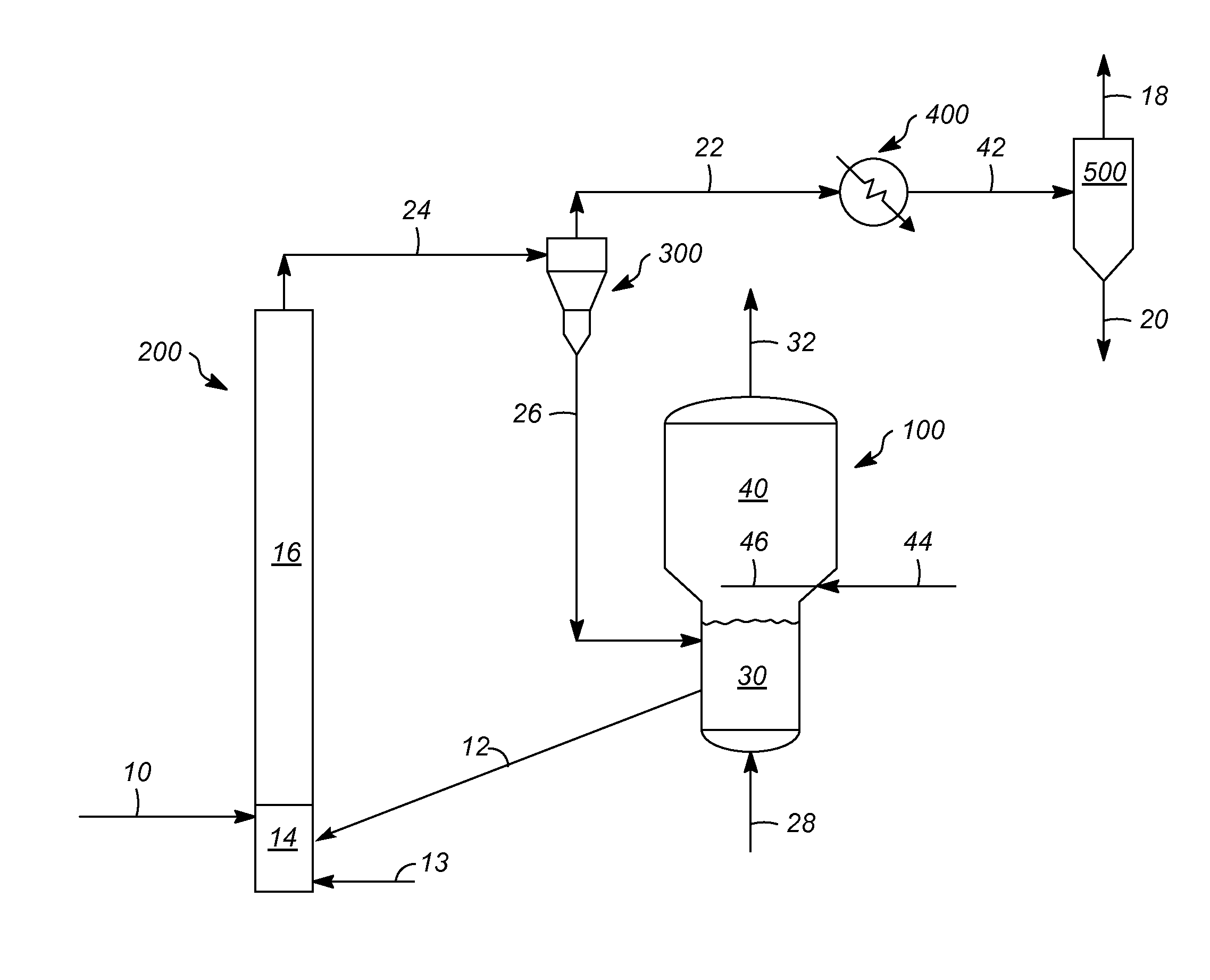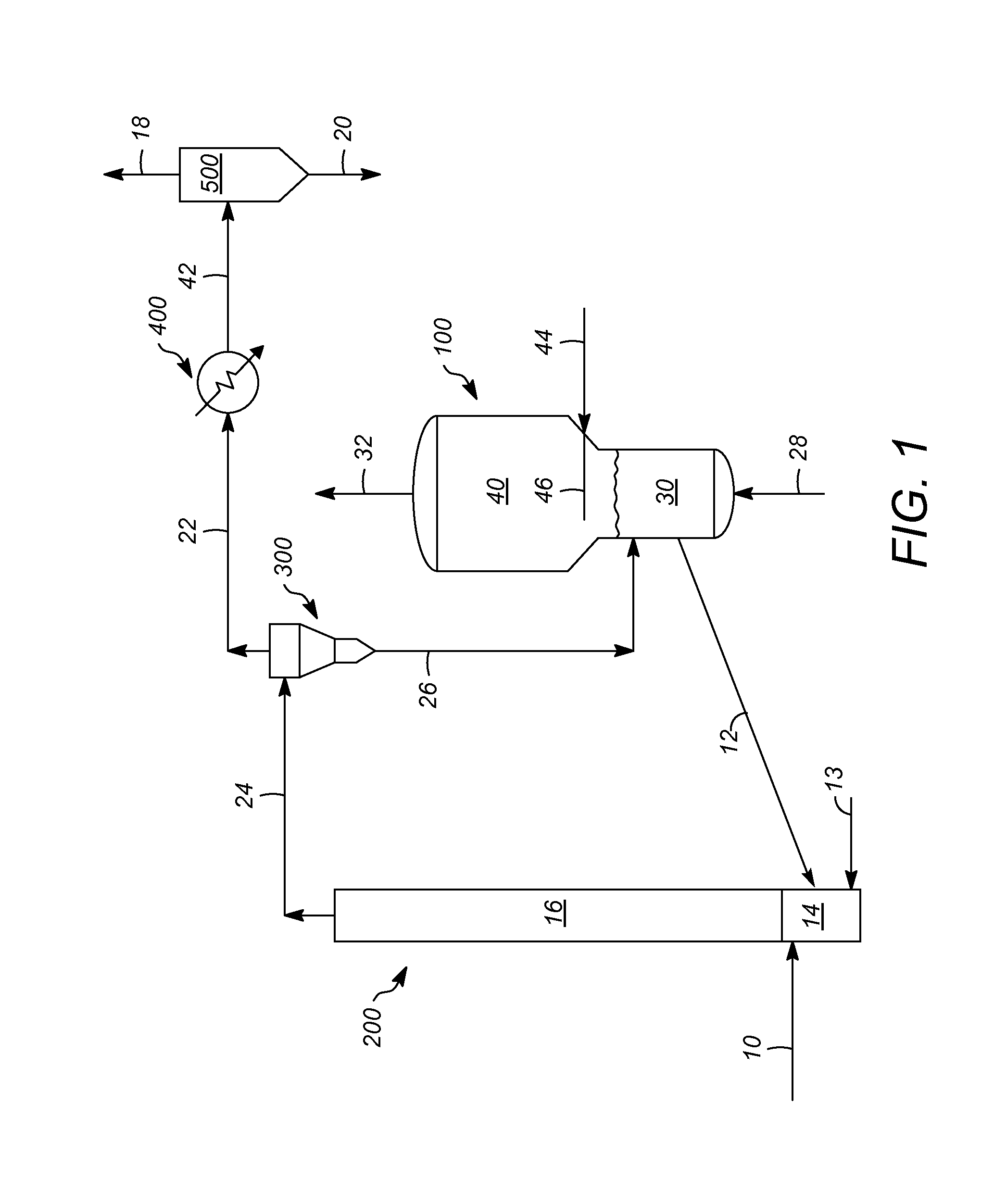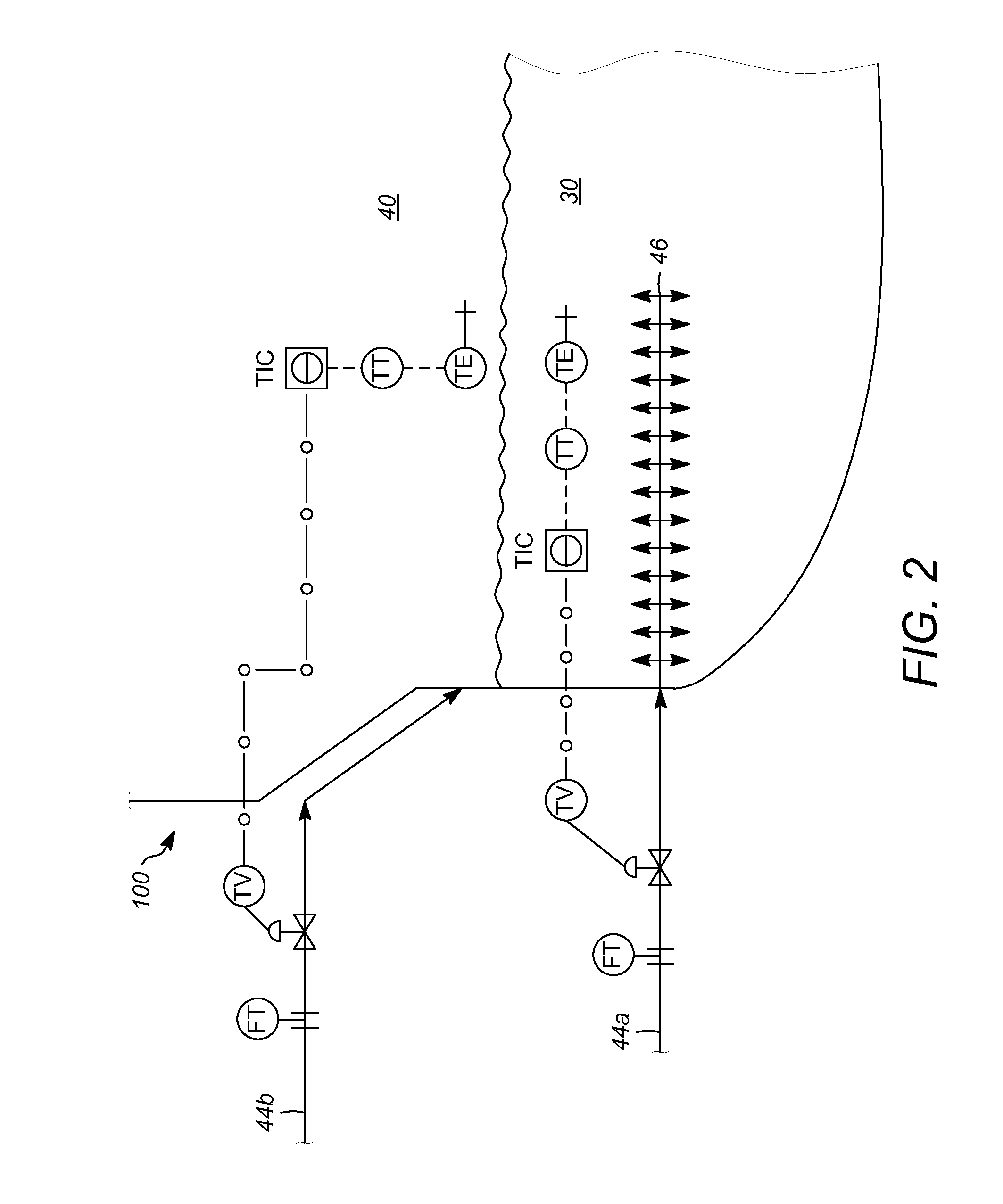Heat removal and recovery in biomass pyrolysis
- Summary
- Abstract
- Description
- Claims
- Application Information
AI Technical Summary
Benefits of technology
Problems solved by technology
Method used
Image
Examples
Embodiment Construction
[0016]According to representative embodiments of the invention, the biomass subjected to pyrolysis in an oxygen depleted environment, for example using Rapid Thermal Processing (RTP), can be any plant material, or mixture of plant materials, including a hardwood (e.g., whitewood), a softwood, or a hardwood or softwood bark. Energy crops, or otherwise agricultural residues (e.g., logging residues) or other types of plant wastes or plant-derived wastes, may also be used as plant materials. Specific exemplary plant materials include corn fiber, corn stover, and sugar cane bagasse, in addition to “on-purpose” energy crops such as switchgrass, miscanthus, and algae. Short rotation forestry products, as energy crops, include alder, ash, southern beech, birch, eucalyptus, poplar, willow, paper mulberry, Australian blackwood, sycamore, and varieties of paulownia elongate. Other examples of suitable biomass include organic waste materials, such as waste paper and construction, demolition, an...
PUM
 Login to View More
Login to View More Abstract
Description
Claims
Application Information
 Login to View More
Login to View More - R&D
- Intellectual Property
- Life Sciences
- Materials
- Tech Scout
- Unparalleled Data Quality
- Higher Quality Content
- 60% Fewer Hallucinations
Browse by: Latest US Patents, China's latest patents, Technical Efficacy Thesaurus, Application Domain, Technology Topic, Popular Technical Reports.
© 2025 PatSnap. All rights reserved.Legal|Privacy policy|Modern Slavery Act Transparency Statement|Sitemap|About US| Contact US: help@patsnap.com



